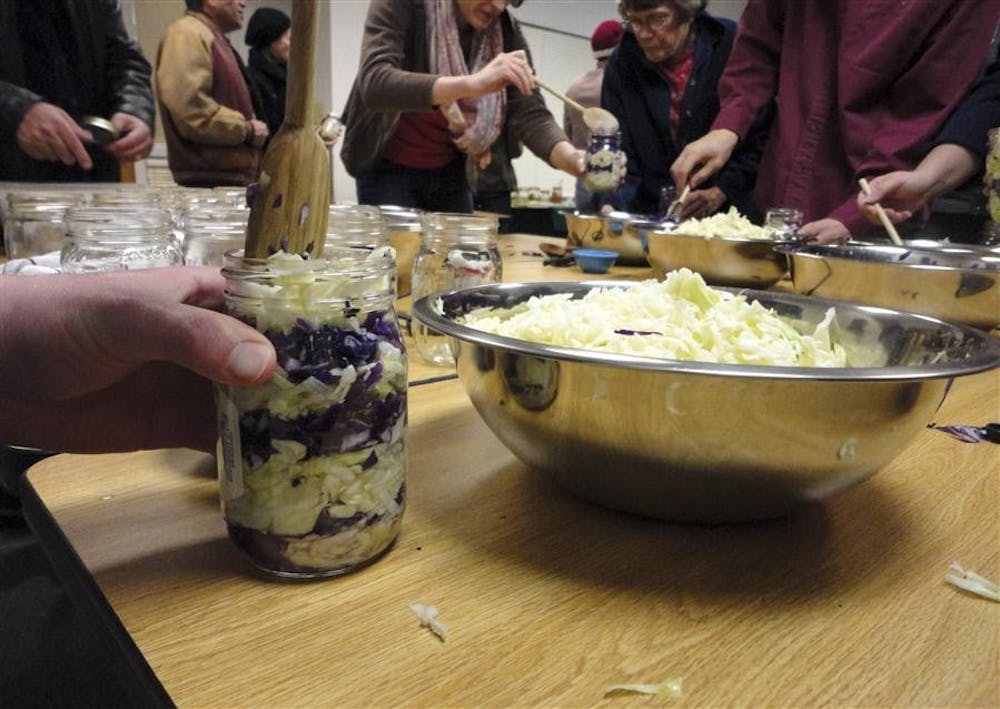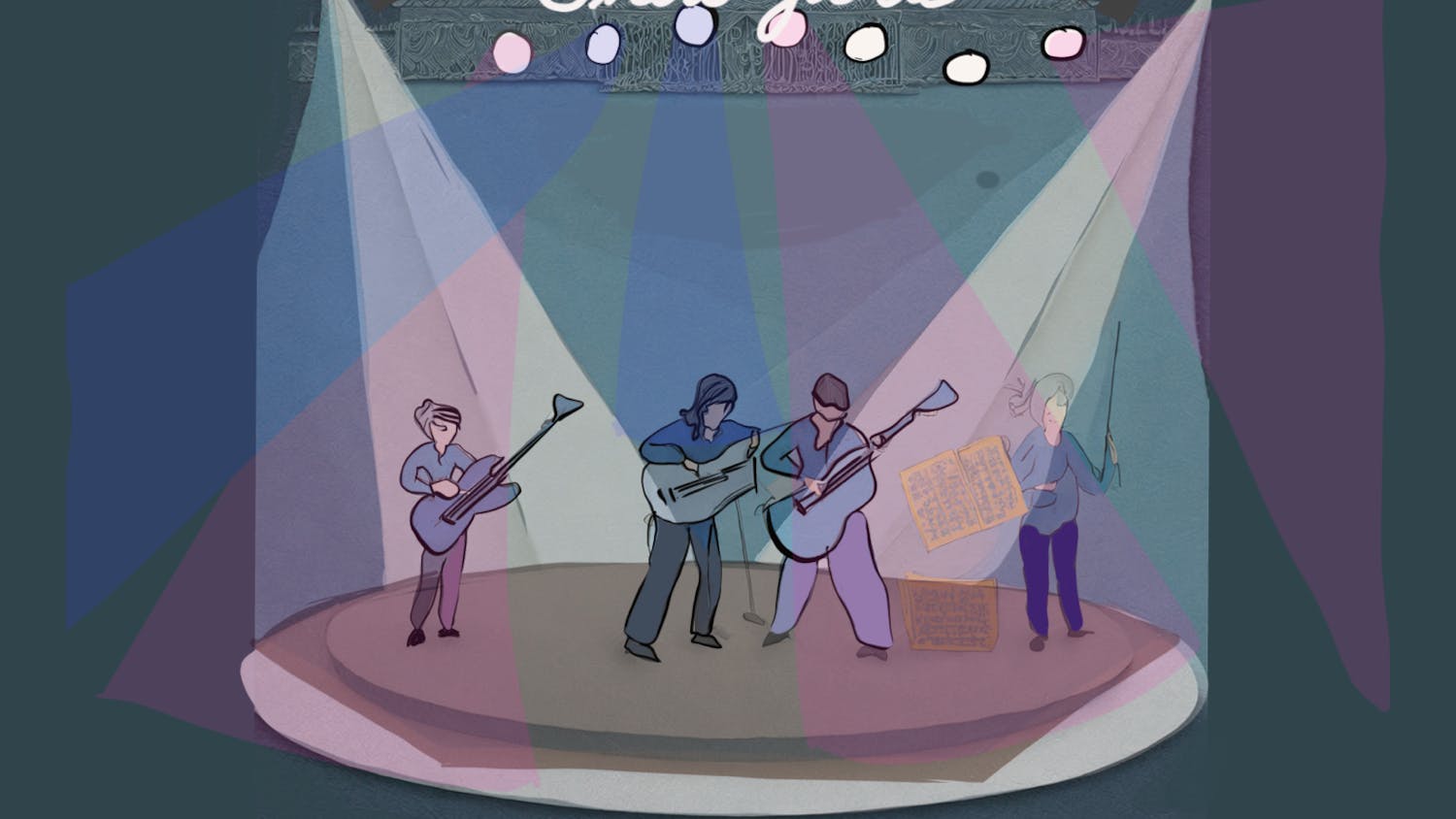David Gilther mashed the shredded cabbage into the Mason jar with obvious enthusiasm.
“Look, the juice is coming up,” Gilther said excitedly.
He pointed to the purple strips of cabbage beginning to release liquid, indicating the jar was ready to be sealed and ferment in order to make sauerkraut.
Gilther and about 29 others attended “It’s Your Money: Fermented Food Fun!” Tuesday at the Monroe County Public Library.
The event allowed participants to learn the basics of home fermentation, as well as try fermented food samples and make their own sauerkraut.
“I’ve always wanted to make sauerkraut,” Gilther said. “I’m going to grow cabbages this summer, and I really hope I can make sauerkraut.”
Mother Hubbard’s Cupboard presented the event, which was part of MCPL’s “It’s Your Money” personal finance series.
Sarah Bowman, MCPL coordinator for the program, said the fermentation event focused on home economics.
In addition to those in attendance, 30 people were on the waiting list, she said.
Stephanie Solomon, MHC director of Education and Outreach, and Kayte Young, MHC education coordinator, stood at the front of the room wearing black aprons, a cabbage and cutting board in front of them.
Fermentation is the transformative process of microorganisms on food, they explained.
“Lacto-fermentation is transferring the starches or sugars in dairy or vegetables, or honey, whatever you’re using and turning them into lacto-bacilli bacteria,” Solomon said. “Usually when you are fermenting, you are bolstering and adding to the amount of nutrition.”
The process increases the vitamin content of vegetables and adds probiotics, which aid in digestion, she said.
“We can eat as much healthy food as we want, but if we don’t have a healthy digestive system, we aren’t going to assimilate those nutrients,” Solomon said.
The pair stressed the safety of home fermentation.
“Fermentation is safe, if not the safest form of food preservation that you can do,” Solomon said.
The USDA has never had a case of food poisoning from fermented foods.
“That’s very reassuring when you are just getting started,” Young said.
The fermentation process changes the flavor of the food, as well, Young said.
“In my opinion, it makes them much more delicious,” she said. “Some people don’t like it at first, but they try it more and they love it.”
Young demonstrated the basics of fermenting a vegetable to the audience.
“For vegetables it couldn’t be simpler,” she said.
She proceeded to finely chop a cabbage and massaged salt into the pieces.
Her hands gradually turned a bright purple as she squeezed the juice from the vegetable. When the vegetable turned almost translucent, it was ready to be put into a jar.
“That’s when you know you’ve done your job,” Solomon said.
The cabbage then ferments for three days to six weeks. The audience tried their hand at making sauerkraut, or sampled kimchi (Korean sauerkraut) and pickled cauliflower. They shared tips among themselves and asked Solomon and Young questions.
The best part of learning to ferment is the community involvement and sharing with your neighbors, the presenters said.
“They’re throwing their SCOBYs (symbiotic colony of bacteria and yeast) at you, they’re giving you their kefir grans,” Solomon said.
Program teaches fermenting basics
Participants use chemistry principles to make homemade sauerkraut as part of personal finance series

Get stories like this in your inbox
Subscribe





